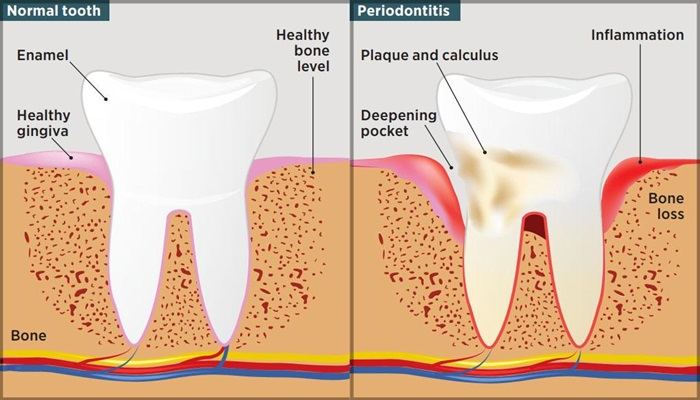Periodontal disease, also known as gum disease, is a serious condition that affects the tissues surrounding the teeth. If left untreated, it can lead to tooth loss. Understanding the stages of periodontal disease and when teeth may fall out is crucial for maintaining good oral health. In this article, we will explore the progression of periodontal disease and the stage at which tooth loss can occur.
What Is Periodontal Disease?
Periodontal disease is an infection of the gums and the bone that supports the teeth. It is caused by a buildup of plaque, a sticky film of bacteria that forms on the teeth. If plaque is not removed through regular brushing and flossing, it can harden into tartar, which is much harder to remove and can lead to gum inflammation and infection.
Stages of Periodontal Disease
Periodontal disease progresses through several stages, each with its own set of symptoms and potential for tooth loss. The stages are as follows:
1. Gingivitis
Gingivitis is the earliest stage of periodontal disease. During this stage, the gums become red, swollen, and may bleed easily during brushing or flossing. However, there is usually no discomfort or pain associated with gingivitis. At this stage, the disease is still reversible with proper oral hygiene and professional dental cleaning.
2. Early Periodontitis
If gingivitis is left untreated, it can progress to early periodontitis. During this stage, the infection begins to damage the gums and the bone that supports the teeth. Pockets form between the teeth and gums, which can collect debris and bacteria. Tooth loss is not common at this stage, but it is important to seek treatment to prevent further progression of the disease.
see also: How to Use Manuka Honey for Periodontal Disease: A Step-by-Step Guide
3. Moderate Periodontitis
As the disease progresses, it reaches the moderate periodontitis stage. During this stage, the pockets between the teeth and gums deepen, and more bone is lost. Teeth may become loose and shift position. Tooth loss is still not common at this stage, but the risk increases if treatment is not sought.
4. Advanced Periodontitis
Advanced periodontitis is the most severe stage of the disease. During this stage, the pockets between the teeth and gums are very deep, and a significant amount of bone has been lost. Teeth may become very loose and may even fall out or need to be extracted. At this stage, the disease is no longer reversible, and treatment focuses on preventing further tooth loss and managing the infection.
When Do Teeth Fall Out?
Teeth are most likely to fall out during the advanced periodontitis stage of the disease. However, tooth loss can occur at any stage if the disease is left untreated. The following factors can contribute to tooth loss in periodontal disease:
Bone loss: As the disease progresses, more bone is lost, which weakens the support for the teeth.
Tooth mobility: Teeth may become loose and shift position, making them more likely to fall out.
Infection: The bacterial infection can destroy the gums and bone, leading to tooth loss.
Trauma: Loose teeth are more susceptible to falling out due to trauma or injury.
It is important to note that the rate of tooth loss can vary from person to person and depends on factors such as the severity of the disease, the individual’s response to treatment, and overall health.
Treatment Options
Treatment for periodontal disease depends on the stage of the disease and the individual’s response to treatment.
Treatment options include:
Professional Cleaning
Professional cleaning, also known as scaling and root planing, is the first line of treatment for periodontal disease. During this procedure, the dentist or hygienist removes plaque and tartar from the teeth and smooths the root surfaces to make it harder for bacteria to accumulate.
Antibiotics
Antibiotics may be used in conjunction with professional cleaning to help control the bacterial infection. Antibiotics can be taken orally or applied directly to the affected areas.
Surgery
In some cases, surgery may be necessary to treat periodontal disease.
Surgical options include flap surgery, which involves lifting the gums back to remove tartar and smooth the bone, and bone grafting, which involves replacing lost bone with synthetic or natural bone material.
Prevention
The best way to prevent periodontal disease is to practice good oral hygiene. This includes brushing twice a day, flossing daily, and visiting the dentist regularly for professional cleanings and checkups.
Additionally, quitting smoking and maintaining a healthy diet can help reduce the risk of developing periodontal disease.
Conclusion
Periodontal disease is a serious condition that can lead to tooth loss if left untreated. Understanding the stages of the disease and when teeth may fall out is crucial for maintaining good oral health. By practicing good oral hygiene and seeking treatment at the first signs of gum disease, individuals can reduce their risk of tooth loss and maintain a healthy, beautiful smile.

